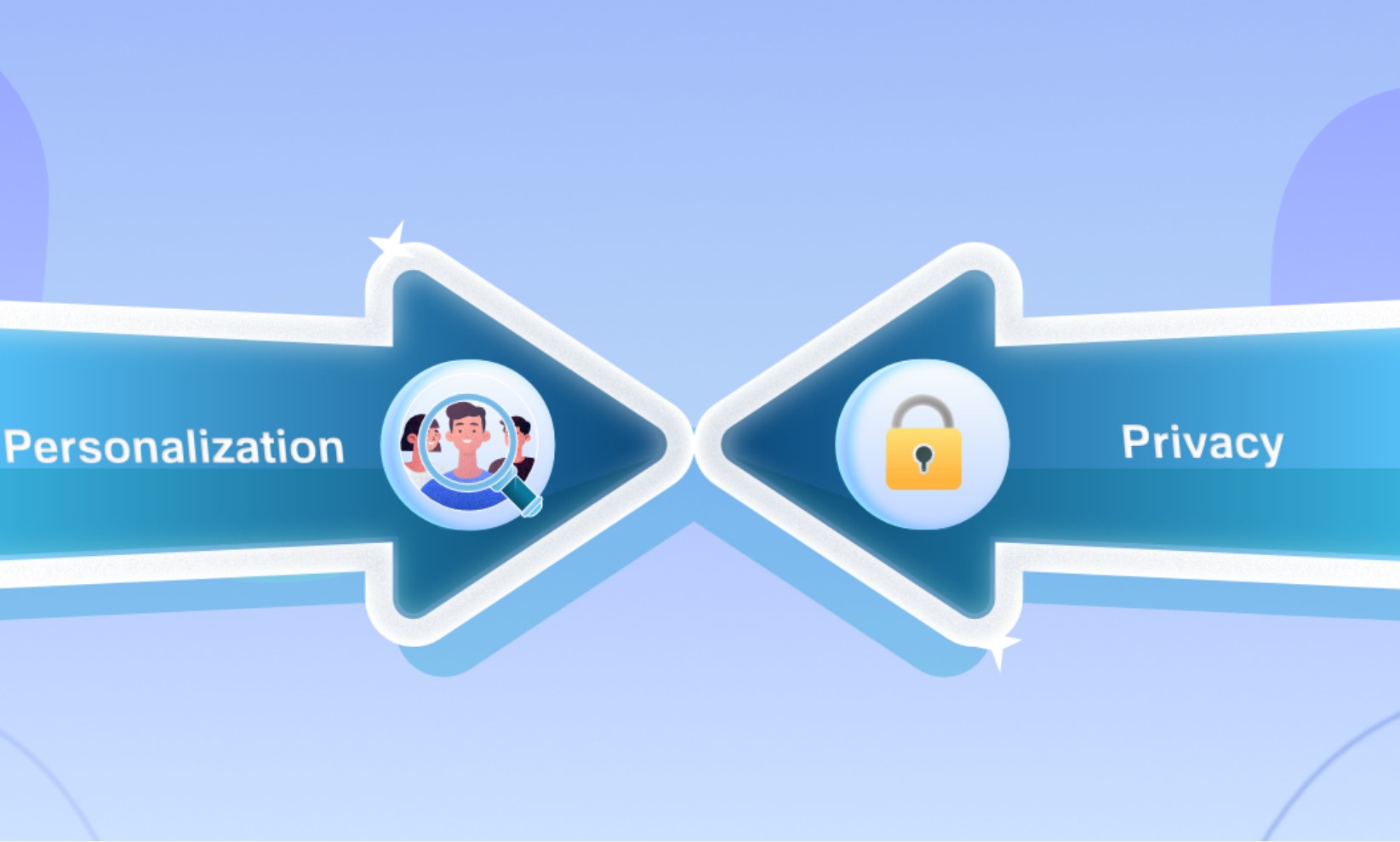In today’s digital age, where data is being collected and analyzed at an unprecedented scale, finding the right balance between data privacy and personalization has become crucial. On one hand, data privacy ensures the protection of individuals’ personal information, while on the other hand, personalization enables tailored experiences and improved services. Achieving a harmonious equilibrium between these two aspects is essential for businesses, organizations, and individuals alike. This article explores the challenges, strategies, and benefits of balancing the importance of data privacy and personalization.
The Significance of Data Privacy and Personalization
Data privacy and personalization both play significant roles in today’s interconnected world. Let’s delve deeper into their importance individually.
The Importance of Data Privacy
Data privacy refers to the protection of individuals’ personal information from unauthorized access, use, or disclosure. In an era where data breaches and privacy concerns are on the rise, safeguarding sensitive data has become a critical priority. Here are some key reasons why data privacy matters:
- Preserving individual autonomy: Data privacy ensures that individuals have control over their personal information, allowing them to make informed choices about how their data is used and shared.
- Building trust: Organizations that prioritize data privacy establish trust with their customers. By implementing robust data protection measures, they demonstrate their commitment to safeguarding personal information.
- Mitigating risks: Protecting sensitive data helps mitigate the risks associated with identity theft, fraud, and unauthorized access. It minimizes the potential harm that can arise from data breaches.
The Importance of Personalization
Personalization refers to tailoring experiences, products, and services to meet the unique needs and preferences of individuals. It leverages data to provide relevant recommendations, targeted advertisements, and customized user experiences. Here’s why personalization is important:
- Enhancing user experience: Personalization enables businesses to deliver tailored experiences that resonate with their customers. By understanding individual preferences, companies can provide relevant content, recommendations, and personalized offers.
- Improving efficiency: Personalization streamlines interactions and reduces the time and effort required for users to find what they need. It enhances efficiency by presenting information that is most relevant to individuals, saving them from sifting through irrelevant content.
- Driving customer loyalty: When customers receive personalized experiences, they feel valued and understood. This fosters a sense of loyalty and increases the likelihood of repeat business and positive word-of-mouth recommendations.
Striking the Right Balance
Achieving a balance between data privacy and personalization may seem challenging, but it is achievable with thoughtful strategies and practices. Here are some effective approaches to consider:
Transparency and Consent
Transparency and obtaining informed consent are essential elements of maintaining the balance between data privacy and personalization. Organizations should clearly communicate their data collection and usage practices to users, ensuring they understand how their information will be utilized. By obtaining explicit consent, companies can engage in personalized experiences while respecting individual privacy preferences.
Anonymization and Aggregation
To strike a balance, organizations can implement anonymization and aggregation techniques. By anonymizing personal data, removing identifying information, and aggregating it with other data points, privacy can be preserved while still extracting valuable insights for personalization purposes. This approach ensures that individuals’ privacy is protected while allowing organizations to benefit from data analysis.
Granular Privacy Controls
Empowering individuals with granular privacy controls is another effective way to balance data privacy and personalization. By providing options to customize the level of data sharing and personalization they are comfortable with, organizations can respect individual preferences and offer personalized experiences without compromising privacy.
Privacy by Design
Adopting a “privacy by design” approach means considering privacy throughout the entire product or service development process. By integrating privacy measures from the outset, organizations can ensure that personalization features are built with data protection in mind. This proactive approach helps strike a balance and avoids privacy issues as an afterthought.
Data Minimization
Data minimization is a key principle in data privacy that focuses on collecting and storing only the necessary data required for a specific purpose. By minimizing the amount of personal data held by organizations, data minimization aims to enhance privacy and reduce the potential risks associated with data breaches and unauthorized access. This practice involves identifying the essential data elements needed for personalization and avoiding the collection of excessive or irrelevant information. Additionally, data minimization promotes regular data purging and the use of techniques like anonymization and aggregation to further protect privacy. By implementing data minimization strategies, organizations can strike a balance between personalized experiences and the protection of individuals’ privacy rights.
- The benefits of data minimization are numerous. Firstly, it reduces the potential risks of data breaches and unauthorized access. By collecting and storing only the necessary data, organizations minimize the amount of sensitive information that could be exposed in the event of a security breach. Secondly, data minimization enhances compliance with data protection regulations. Many jurisdictions have specific requirements regarding data minimization, and organizations that adhere to these principles are more likely to meet legal obligations and avoid penalties. Finally, data minimization promotes transparency and trust. When individuals are aware that only the necessary data is being collected and used, they are more likely to trust organizations with their personal information, leading to stronger relationships and improved customer satisfaction.
Implementing data minimization requires a proactive approach from organizations. They should regularly review their data collection practices and assess the necessity of each data element. By conducting data audits, organizations can identify and eliminate redundant or unnecessary data, ensuring that they are only collecting and storing what is essential. It is also important to communicate with individuals about data minimization efforts, explaining the benefits and reassuring them of their privacy rights. By prioritizing data minimization, organizations can not only enhance privacy and mitigate risks but also build trust and strengthen their relationships with customers.
Regular Security Audits and Compliance
Regular security audits and compliance with data protection regulations are crucial to maintaining the balance between data privacy and personalization. By regularly assessing security measures, identifying vulnerabilities, and complying with applicable regulations, organizations can build trust with users and ensure their data is handled responsibly.
FAQs about Balancing Data Privacy and Personalization
1. What is the impact of data privacy regulations on personalization efforts?
Data privacy regulations, such as the General Data Protection Regulation (GDPR) and the California Consumer Privacy Act (CCPA), have a significant impact on personalization efforts. These regulations require organizations to obtain explicit consent, provide transparency in data collection and usage, and offer robust privacy controls to individuals. While they may impose limitations on data usage, they also promote a more privacy-centric approach, ultimately benefiting individuals and fostering trust.
2. Can data privacy and personalization coexist?
Yes, data privacy and personalization can coexist. By implementing privacy-preserving techniques, obtaining informed consent, and empowering individuals with privacy controls, organizations can deliver personalized experiences while respecting privacy preferences. It requires a balanced and responsible approach that prioritizes both aspects.
3. Are there risks associated with prioritizing personalization over data privacy?
Prioritizing personalization over data privacy can lead to privacy breaches, unauthorized data usage, and erosion of trust among users. Neglecting data privacy can result in reputational damage, legal consequences, and a loss of customer confidence. Therefore, it is crucial to strike a balance and prioritize both aspects.
4. How can individuals protect their data privacy while enjoying personalized experiences?
Individuals can protect their data privacy by being cautious about the information they share online, reviewing privacy settings, and being aware of the privacy policies of the platforms they use. They can also exercise their rights provided by data protection regulations, such as the right to access, rectify, and delete personal information.
5. What are the benefits of finding the right balance between data privacy and personalization?
Finding the right balance between data privacy and personalization brings several benefits. It fosters trust among users, enhances customer satisfaction, improves the relevance of recommendations, and ensures compliance with data protection regulations. Additionally, it allows organizations to leverage the power of personalization while respecting individual privacy preferences.
6. How can organizations stay updated with evolving data privacy regulations?
Organizations can stay updated with evolving data privacy regulations by closely monitoring regulatory developments, engaging legal experts, and participating in industry discussions. It is essential to establish a privacy compliance program and regularly review and adapt privacy policies and practices based on the evolving regulatory landscape.
Balancing the importance of data privacy and personalization is a complex yet vital task in today’s digital landscape. By prioritizing data privacy, implementing privacy-preserving techniques, and empowering individuals with privacy controls, organizations can achieve personalized experiences while respecting individual privacy preferences. Striking the right balance fosters trust, enhances user experiences, and ensures compliance with data protection regulations. As technology continues to advance, finding innovative ways to achieve this equilibrium remains an ongoing challenge.

